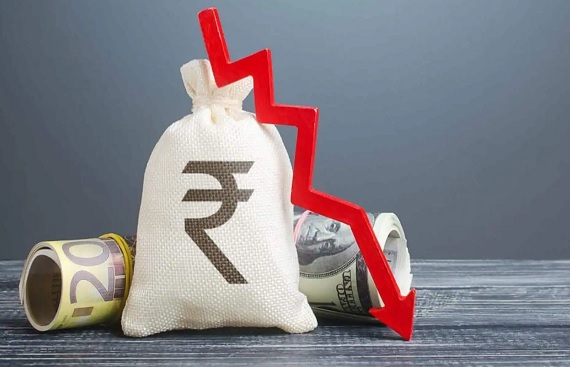Forex Reserves Dip $5 Billion as RBI Steps In to Support Rupee
By
siliconindia | Monday, September 1, 2025

- Rupee opens weaker at Rs 88.23, pressured by US tariffs and foreign outflows.
- India’s GDP grows 7.8% in Q1 FY26, but second-quarter slowdown expected due to tariffs.
- Forex reserves fall $5B to $691B, RBI may allow gradual depreciation to maintain competitiveness.
The Indian Rupee opened slightly weaker on Monday and remained above the 88 mark against the US dollar, pressured by foreign outflows and the impact of trade tariffs. According to Bloomberg, the domestic currency opened 3 paise lower at Rs 88.23 against the dollar. The rupee has slipped 3.15 per cent in the current financial year and has depreciated 3.01 per cent so far, making it the worst performer among Asian peers.
Market experts said the currency could continue to face pressure due to US tariffs, foreign portfolio investor outflows, and weakness in government bonds. Anil Kumar Bhansali, head of treasury and executive director at Finrex Treasury Advisors LLP, noted that yields on the 10-year government bond rose to nearly 6.70 percent before easing to 6.57 percent.
The rupee hit an all-time low of Rs 88.31 last Friday after the Reserve Bank of India allowed it to breach Rs 87.80, a level it had been defending for six months, surpassing the previous record low of Rs 87.95. Bhansali said that the 50 per cent US tariffs are expected to hurt portfolio inflows, even as India continues talks with the United States on trade and tariff issues.
Despite the currency pressure, India’s economy continues to show strong growth. Gross Domestic Product grew 7.8 per cent in the first quarter of the financial year 2025-26 (April-June), marking a five-quarter high. Nominal GDP increased 8.8 percent to Rs 86.05 trillion during the same period. Analysts, however, expect a slowdown in the second quarter due to the spillover effects of the tariffs.
India’s foreign exchange reserves fell by $5 billion to $691 billion as of August 22, 2025, after the Reserve Bank of India sold dollars to support the rupee. Bhansali said the central bank may allow further depreciation to maintain competitiveness against peers facing lower tariffs. He added that exporters who sold at Rs 87.80 may wait for further declines, while importers are advised to hedge on major dips and cover near-term payables on smaller ones.
In a key geopolitical development, Indian Prime Minister Narendra Modi said New Delhi was committed to improving ties with China in a meeting with President Xi Jinping on Sunday. Both leaders discussed the need to expand trade and investment links, especially against the backdrop of US tariffs. Analysts said closer cooperation with China could help India offset some of the negative effects of global trade tensions.
The US dollar index, which measures the greenback against a basket of six major currencies, was slightly lower at 97.71, down 0.06 per cent. This followed a US federal appeals court ruling that struck down President Donald Trump’s trade tariffs as illegal.
In commodities, crude oil prices held in a narrow range amid concerns over demand due to US tariffs. Brent crude traded 0.40 per cent lower at $67.21 per barrel, while WTI crude fell 0.37 per cent to $63.65 per barrel as of 6:37 AM IST.
Overall, the rupee is expected to remain under pressure in the near term, with market participants closely watching developments related to US tariffs, foreign portfolio flows, and domestic bond yields. Analysts suggest that exporters and importers take strategic steps to manage currency risk, while the Reserve Bank’s approach of allowing gradual depreciation may help maintain competitiveness in international trade.

